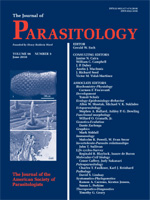Cationic steroid antibiotics (CSAs), or ceragenins, are amphiphilic compounds consisting of a cholic acid backbone that is attached to several cationic amines. In this study, we tested the hypothesis that CSAs possess antiparasitic activities with minimal to no effects on mammalian cells, and thus could be used as potential therapeutic agents against pathogenic trypanosomatids. To investigate this notion, we synthesized CSAs and determined their trypanocidal and leishmanicidal activities in vitro. The 3 ceragenins assayed, i.e., CSA-8, CSA-13, and CSA-54, showed several degrees of parasiticidal activity. CSA-13 was the most effective compound against Leishmania major promastigotes and Trypanosoma cruzi trypomastigotes, at LD50 4.9 and 9 µM, respectively. The trypanocidal activities of these ceragenins were also assessed by infectivity experiments. We found CSA-8 was more effective on T. cruzi intracellular amastigotes when the infected host cells were treated for 24 hr (LD50, 6.7 µM). Macrophages and LLC-MK2 (treated for 72 hr) showed relative low susceptibility to these compounds. Our results suggest that ceragenins are indeed promising chemotherapeutic agents against trypanosomatids, but they require further investigation.
How to translate text using browser tools
1 June 2010
Anti-Trypanosomatid Activity of Ceragenins
Diana Lara,
Yanshu Feng,
Julia Bader,
Paul B. Savage,
Rosa A. Maldonado
ACCESS THE FULL ARTICLE

Journal of Parasitology
Vol. 96 • No. 3
June 2010
Vol. 96 • No. 3
June 2010




